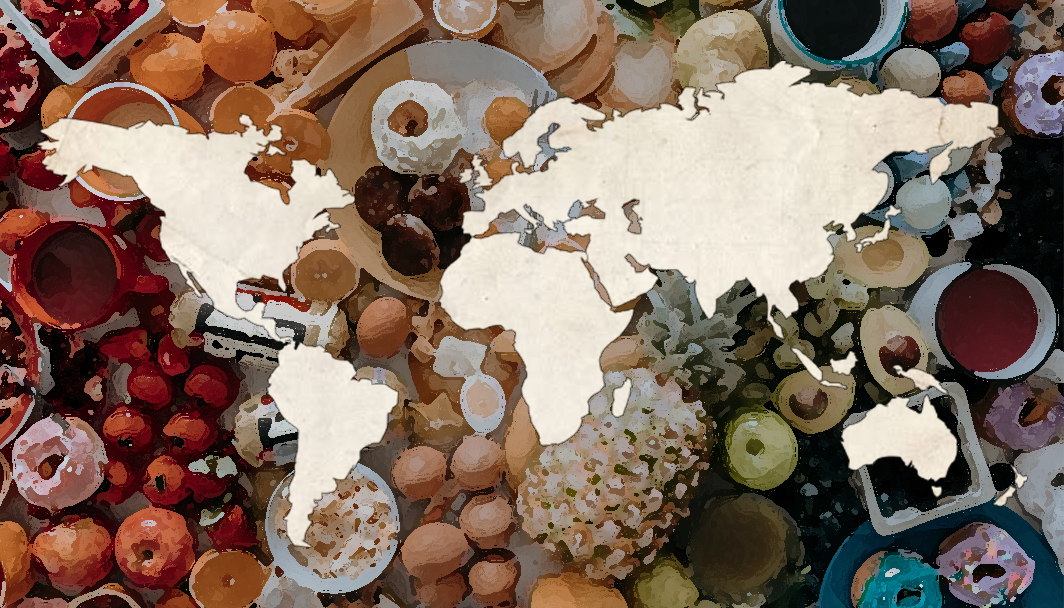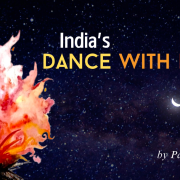If you have TikTok, you must have seen at least one recipe video come across your feed. When you check the comments, however, there is a high chance you see users ‘fighting’ about the origin of the dish. I certainly have, and it made me wonder if there are maybe more similarities between food cultures than I thought. Of course, I was aware of some similarities, such as dumplings essentially existing in different varieties across cultures: wontons from China, gyoza from Japan, samosa from India (but found in multiple regions), and Pierogi from Poland – to just name a few. However, as someone who loves food and is curious about its varieties and origins, I wanted to find out more.
Food plays an important role in our lives, and it turns out that it is one of the most important factors in how we see and distinguish people, as well as how people’s culture is influenced – as stated by V. Sibal. All cultures have different varieties of food and ingredients because of the different crops and natural resources available in those areas, but also because people’s ancestors established food they liked and disliked, resulting in certain food-choice patterns within cultural groups. Through these food patterns, people connect to their cultural/ethnic group, thus maintaining their cultural identity. So, what is the exact meaning of food? For one, it is a way to explore culture: what we eat, how we obtain it, who prepares it, and who eats it is a type of communication with a rich cultural background. Besides sustaining our bodies, what and with whom we eat can sustain bonds between individuals, groups, and countries too. By looking at the rituals surrounding food, we can find out more about beliefs about both others and ourselves. The connection between food and culture thus negotiates our environments, cultures, and identities.
This is all quite theoretical, but what about reality? To gain more information about how people from different cultures enjoy food, I asked a couple of people about their experiences with food in their cultures. First up is Ukraine, where I was told by Alisa, who is from Ukraine, that people usually have three full meal courses during the day. Foods that are frequently eaten are soup, meat (especially salo, pig’s fat), potatoes (mashed), milk and dough (such as bite/sweet pies, dumplings, pelmeni), and fruit compotes. As for similarities with other cultures, there are a lot of them between Ukrainian and Russian cuisines, as well as Polish and Belarusian. Two of the main things that you will probably find in all of these cultures are dumplings (pierogi, vareniki) with various fillings, and draniki (derynu) which are potato pancakes. So, how does all this food reflect Ukrainian culture? When I asked this question, Alisa was not sure how to answer, but what she did say is that Ukrainians eat lots of warm food which may symbolize the closeness of the Ukrainian people – families are big and very interconnected there.
Another country with a rich cultural heritage is Vietnam, where Hong, who is from Vietnam, mentioned that food differs between the different regions in the country (food from the South is sweeter for instance) and contains influences from different countries. Food in Vietnam has similarities to Thailand, China and France for sure, but I was told these similarities mostly come from colonization and not because Vietnam is close (in proximity) to those countries. Through colonization, new food was introduced in Vietnam, and its people gradually developed their own versions of those dishes. Food in Vietnam takes quite a while to make, is filled with spices and ingredients, and making food together with family usually occurs for everyday meals. Food is always shared with others, and it is usually served in a big bowl/plate/pot so that everyone can take their own piece. Hong said that this reflects Vietnam’s collectivist culture: people support and see each other as a team, a whole, and people are always willing to help others, and share their food as well as other things. Vietnamese people like to make food and prepare it together, which makes them bond. “Food is a huge part of our culture and we are very proud of what we have.”.
We have seen two entirely different cultures – Ukrainian and Vietnamese – but the one thing they share (next to dumpling varieties) is the closeness/interconnectedness of families and the people in general. Of course, there are way more cultures to explore and talk about, but let’s leave that for another time. What I hope you got from this for now is that food is way more than just food – it is a way for people to bond, connect with others / their culture, and if we look at the rituals surrounding food we can find out more about people’s beliefs. As for similarities between food cultures, I haven’t found any concrete answers (yet), but what I do know now is that these similarities are probably caused by the natural availability of food in neighbouring countries as well as colonization bringing one culture’s food to another – as in Vietnam, for instance. So, next time you are eating a dumpling (or anything else for that matter), think about the cultural heritage and the similarities it has to other cultures.
Author: Marit van der Kwaak
Editor: Phoebe Elliott
Visuals by: Magali Meijers


